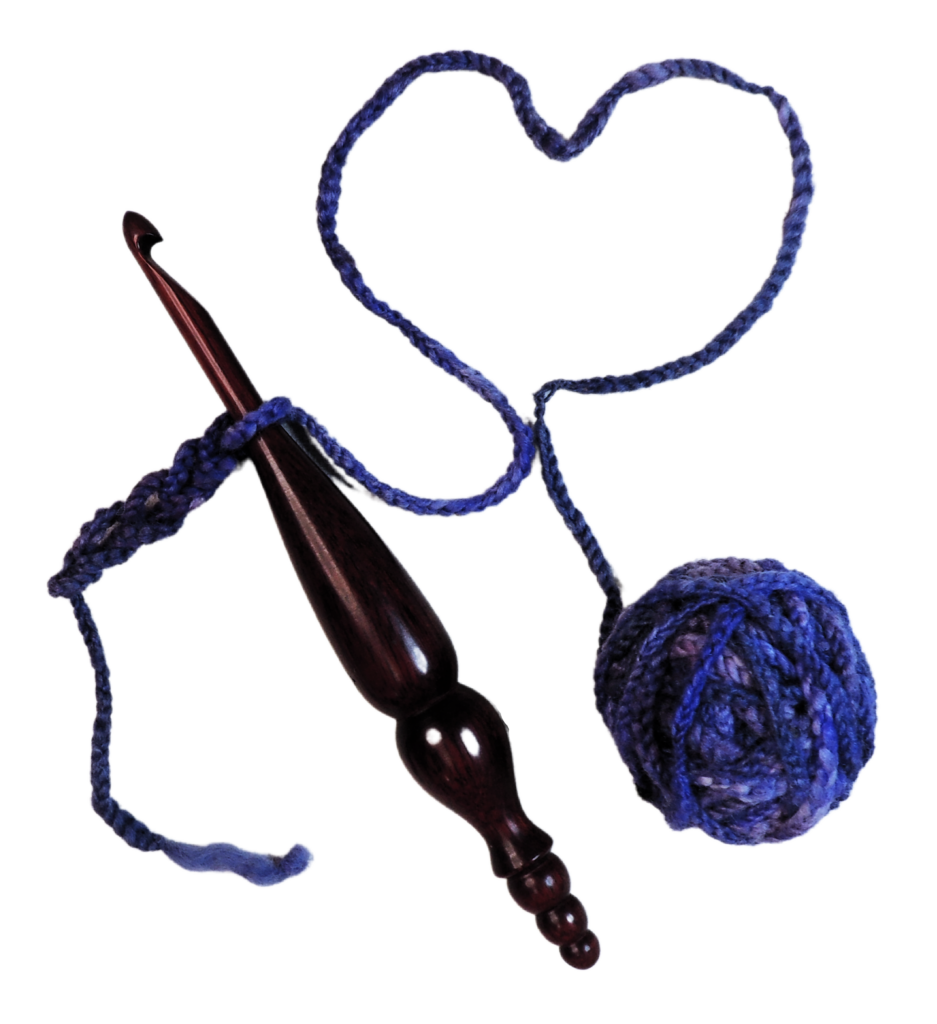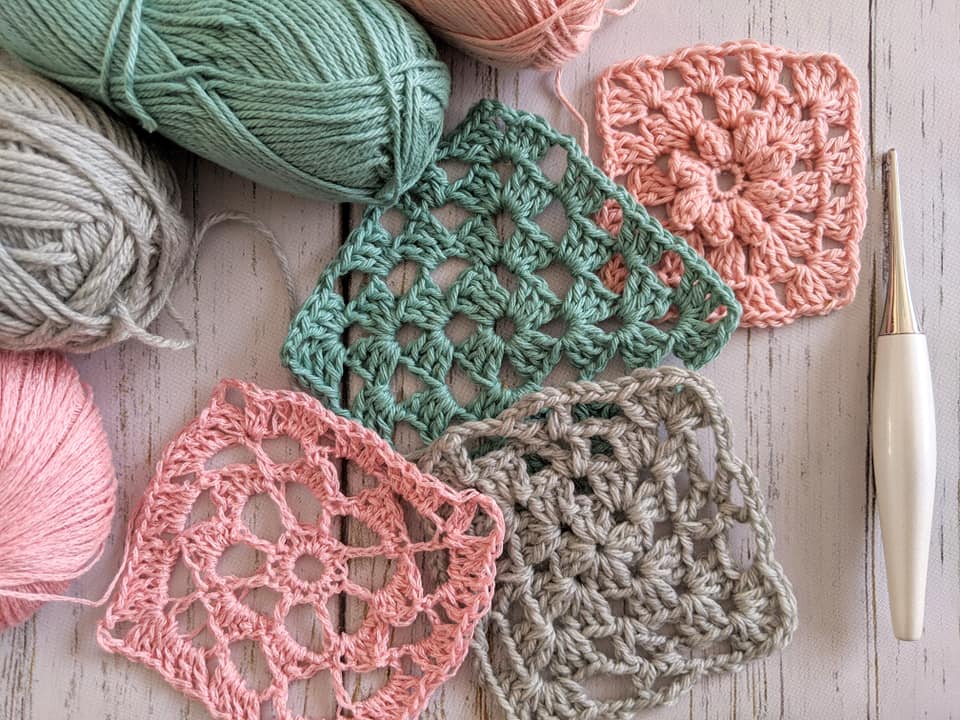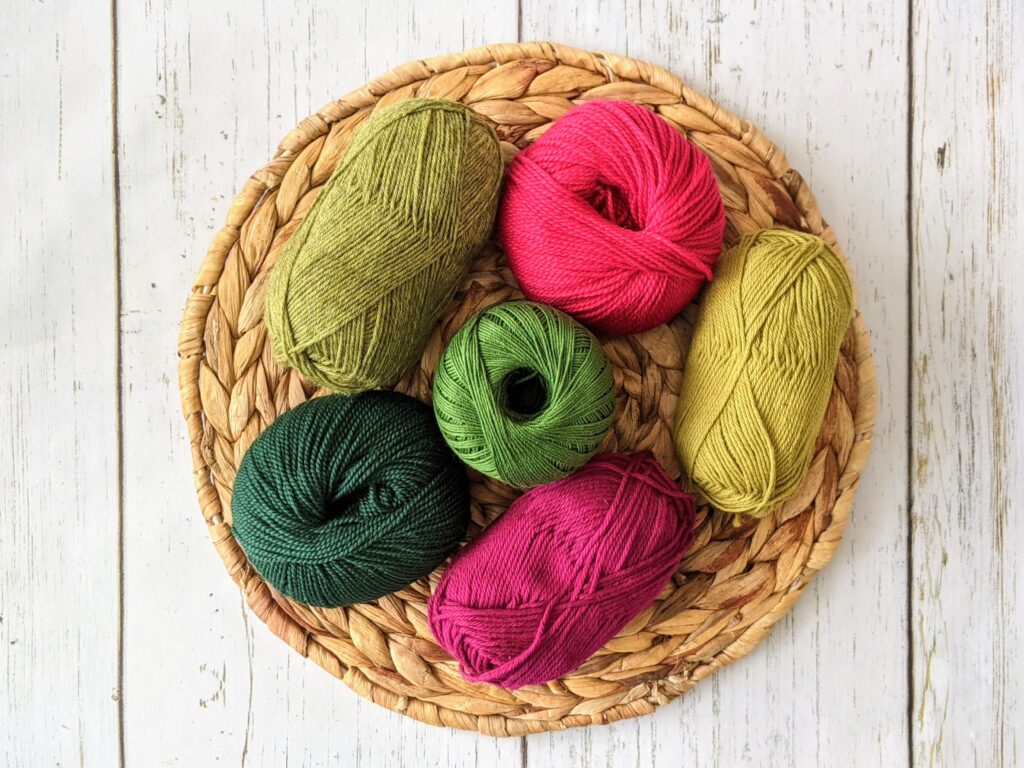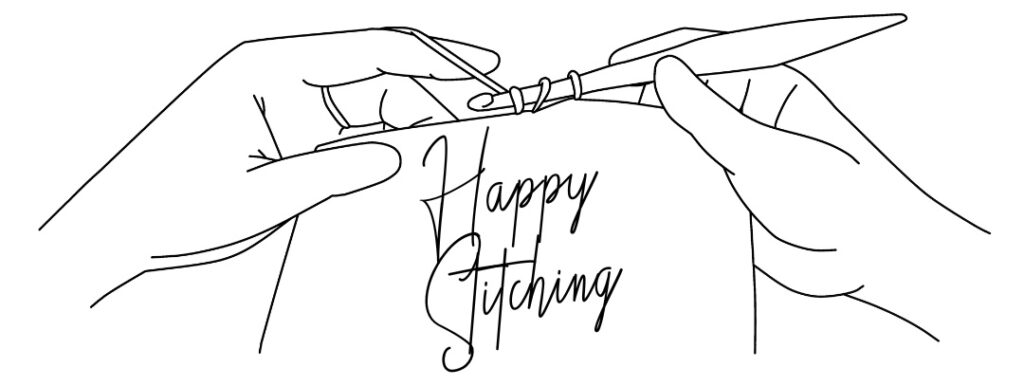The yarn you choose can change how your finished creation moves, its care method, and the texture. It’s important to keep this in mind when making your yarn choice.
A common reason why makers follow a pattern yet come out with a finished item that’s just NOT what they were looking for is that they choose the wrong yarn.

Drape
Drape is essentially how a fabric moves. If you’re making a basket or container of some sort, you’ll want your finished fabric to be stiff so it holds its shape. Whereas if you’re making a skirt or shawl that you want to blow in the wind, you’ll need a more flowing and softer drape.
While choosing a stitch and gauge that creates the type of drape you’re looking for is very important, you also need to choose the correct yarn. Raffia is not going to be delicate and breezy, so it’s not the best choice for that skirt that blows in the wind.
Both the yarn fiber and production method of a yarn can affect the drape. For example, when made with the right production method silk can be incredibly flowing, and depending on the production method acrylic can be very stiff. However, that does not mean that silk is never stiff and acrylic is never soft. The way the yarn is manufactured can have a huge impact on the finished drape. There have been a lot of advances in acrylic yarn production, and nowadays there are acrylic yarns of just about every drape and feel.
Think about the finished look and feel you want for your creation, then choose a yarn that has those qualities. There’s more than just the yarn that will affect the finished drape, so don’t expect the yarn to do all the work for you. Still, starting with the right yarn will get you going on the right path.
If you’re working from a pattern or sample item, and you want your finished item to look like the sample, your best bet is to use the same yarn that the designer used. If you can’t do that, I always recommend checking out yarnsub.com – it’s an amazing site with great yarn substitutions and it explains how each substitution may vary from the original yarn.

Care Method
The care method that you use for your finished item can significantly change that finished item. Some yarns will shrink, some will grow, some will felt, some will pill, and some will turn into a hopeless mess. While there are many variables at play here, the yarn and care method you use are two of the big ones.
If you haven’t figured out and tested your care method ahead of time, things can go quite astray the first time you wash your finished piece. The best way to avoid this is to swatch and test ahead of time.
Making a swatch and testing your care method is especially important when making a fitted garment or an item where the drape of the fabric matters a lot.
Make several swatches at least 8 inches or 20 cm square, using the yarn, hook (or needle), and the stitch pattern of the finished item. Keep one unwashed and untouched, then try a few washing and drying methods with the others. Once they’re all washed and dried you can decide the care method you like the best and you will be able to start making your finished item.
It’s very important that you match your gauge to the pattern gauge using the AFTER CARE gauge measurements. If the finished item is blocked, the gauge swatch needs to be blocked as well. Whatever happens to the finished item, happens to the gauge swatch.
Yes, sometimes this requires more time and math, but these are the kind of things that are going to bring your creations from “something that I was able to wear once and then I washed it and I couldn’t wear anymore” to a show stopping piece that has a long lifetime of being worn with love and pride.
If you’re giving or selling your finished creation, you want to share the care method; Take a moment to put that care method on an index card or tag that the new owner can keep. Add a description or sketch of the item to the tag, so that the owner remembers what item it goes to.

Texture
Another way yarn can differ that matters a lot when choosing yarn for your creation is texture. Some yarns are fuzzy or furry, some are nubby, some are soft, and some are scratchy. Like it or not, the texture is an important part of the yarn.
The finished look of your item will be affected by the texture of the yarn you use. There’s a big difference between something made out of a fuzzy yarn and something made out of a really smooth yarn with not a single fiber out of place. While they both have their uses, they are different looks and you need to keep that in mind.
Texture also affects the drape of your yarn. The best way to know how it affects the drape is to test it out. Yes, that means swatch. Are we seeing a pattern? Swatches matter.
The feel of your final creation is even more important when you’re talking about wearable items, especially with items worn directly against the skin. Feel your yarn, see what it’s going to feel like when it’s still in the skein or ball form, and then again once you’ve made your swatch. Take your swatch and rub it on your arm and your cheek to see how it feels.
Feel may not be such a big deal if you’re making something that’s not worn.
All three of these factors – Drape, Care Method, and Texture – will matter a little more or less depending on what you’re creating. Use this information to choose the yarn that will work best for you and the vision you have for your finished item. The right yarn is an important part of loving what you create.
Members can watch this video without ads in the member area HERE.
HERE’s a free yarn standards printable to help you with your yarn and hook choices.



